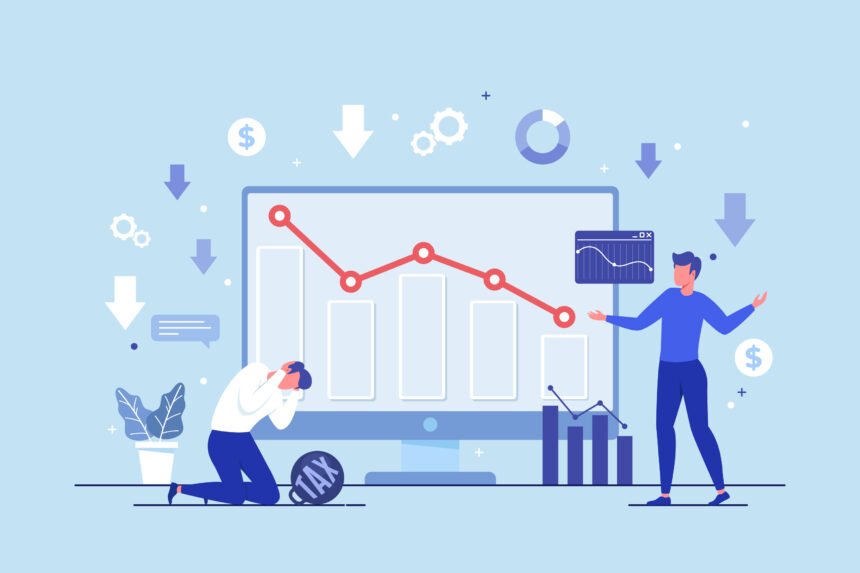In today’s fast-paced business environment, a steady flow of leads is essential for driving sales and ensuring the growth of any company. However, when businesses experience Poor LeadFlow, the consequences can be significant, ranging from reduced revenue to missed opportunities. In this article, we’ll explore what Poor LeadFlow is, its causes, its impact, and how you can fix it to boost your business’s success.
What Is Poor LeadFlow?
Understanding Poor LeadFlow
Poor LeadFlow occurs when the quantity or quality of leads coming into the sales funnel is insufficient. This means fewer potential customers for your business to engage with, ultimately resulting in fewer sales opportunities and lower revenue. Poor LeadFlow can manifest in several ways, such as a decline in the number of inbound inquiries, low engagement with marketing campaigns, or an overall lack of qualified leads.
Common Signs of Poor LeadFlow
Some clear signs of Poor LeadFlow include:
- A decrease in the number of leads generated over time.
- Leads that do come in are low quality, meaning they aren’t the right fit for your product or service.
- Sales teams are reporting longer periods between lead acquisition and closing deals.
- Marketing campaigns are not attracting enough attention or conversions.
Causes of Poor LeadFlow
Marketing Issues Leading to Poor LeadFlow
One of the most common reasons for Poor LeadFlow is related to marketing efforts. If your marketing strategies are outdated or ineffective, the number and quality of leads coming in will decrease.
Ineffective Lead Generation Strategies
If your lead generation strategies are not tailored to your target audience, you will likely experience Poor LeadFlow. For example, using generic messaging that doesn’t resonate with your potential customers can lead to a lower conversion rate.
Poor Targeting and Segmentation
When your marketing campaigns are not properly segmented, you may attract unqualified leads. Poor audience targeting often results in irrelevant traffic, meaning the people who visit your website are not interested in your offering.
Low-Quality Traffic Sources
If your business relies on traffic sources that aren’t relevant or of low quality, the leads generated from these sources are unlikely to convert. This is a direct cause of Poor LeadFlow, as you’re spending resources on leads that don’t fit your buyer persona.
Impact of Poor Lead Flow on Business
How Poor LeadFlow Affects Sales
When a business experiences Poor Lead Flow, the sales team has fewer opportunities to close deals. This reduced opportunity negatively impacts overall sales performance, making it harder for the company to meet revenue goals.
Reduced Opportunities in the Sales Funnel
With fewer leads entering the sales funnel, there is less movement at every stage of the process. This means fewer opportunities for follow-ups, nurturing, and ultimately, closing deals.
Longer Sales Cycles
Poor Lead Flow often leads to longer sales cycles. Sales teams may need to spend more time engaging with fewer leads to keep the funnel active, which reduces overall efficiency and delays closing deals.
Read more about: Online Gaming: The Ultimate Digital Playground
How to Diagnose Poor LeadFlow
Identifying Gaps in Lead Generation
To diagnose Poor LeadFlow, businesses need to closely analyze their lead generation processes. Are you generating enough leads to meet your sales goals? Are the leads you’re attracting qualified and ready to buy? Identifying where your strategy is falling short can help pinpoint areas for improvement.
Analyzing Lead Quality vs. Quantity
It’s important to look at both the quality and quantity of your leads. Even if you’re generating a large number of leads, if most of them aren’t a good fit for your product, you’re still experiencing Poor Lead Flow.
How to Fix Poor LeadFlow
Optimizing Lead Generation Efforts
To improve Poor LeadFlow, businesses need to refocus their lead generation efforts. This may involve refining marketing campaigns, adjusting your messaging, or trying new lead generation channels.
Improve Targeting and Audience Segmentation
One way to fix Poor Lead Flow is by improving your audience targeting and segmentation. By narrowing your focus to attract more qualified leads, you can increase the chances of converting prospects into paying customers.
Leveraging Multiple Traffic Channels
If you’re relying on just one or two traffic channels for lead generation, you could be missing out on potential customers. Diversifying your lead generation efforts across multiple platforms—such as social media, search engines, and content marketing—can help increase the number of qualified leads coming into your funnel.
Best Practices for Preventing Poor LeadFlow
Continuous Monitoring of Lead Sources
To prevent Poor Lead Flow, businesses should continuously monitor the performance of their lead sources. By tracking key metrics like conversion rates and engagement levels, you can identify potential issues before they negatively affect your lead flow.
Nurturing Leads Throughout the Sales Process
Nurturing leads is crucial to preventing Poor LeadFlow. By staying engaged with prospects through email marketing, personalized content, and regular follow-ups, you can keep leads interested and move them closer to making a purchase.
Technology Tools to Improve Lead Flow
CRM Systems for Lead Management
A Customer Relationship Management (CRM) system can help businesses manage their leads more effectively. CRMs allow you to track interactions with prospects, monitor lead progress through the sales funnel, and ensure no opportunities are missed.
Marketing Automation Tools
Marketing automation tools can be instrumental in improving lead flow. These tools allow businesses to automate tasks like email campaigns, social media posting, and lead nurturing, helping keep prospects engaged and moving through the funnel.
Conclusion
Poor LeadFlow is a common issue that many businesses face, but with the right strategies, it can be fixed. By diagnosing the root causes, optimizing lead generation efforts, and leveraging technology, businesses can turn around their lead flow and set themselves up for long-term success. The key is to stay proactive, continuously monitor performance, and make adjustments as needed to ensure that your sales team has the opportunities they need to thrive.
FAQs
- What is Poor LeadFlow?
Poor Lead Flow refers to the inadequate quantity or quality of leads coming into the sales funnel, resulting in fewer opportunities for the sales team. - How can PoorLeadFlow affect my business?
Poor Lead Flow can lead to fewer sales opportunities, longer sales cycles, and reduced revenue, making it harder to meet business goals. - What are some common causes of Poor Lead Flow?
Common causes include ineffective lead generation strategies, poor targeting, low-quality traffic sources, and outdated marketing efforts. - How can I improve Poor LeadFlow?
You can improve Poor Lead Flow by optimizing your lead generation efforts, improving audience segmentation, and using multiple traffic channels to attract better-qualified leads. - What tools can help with improving lead flow?
CRM systems and marketing automation tools can significantly improve lead flow by helping businesses manage and nurture their leads more effectively.







